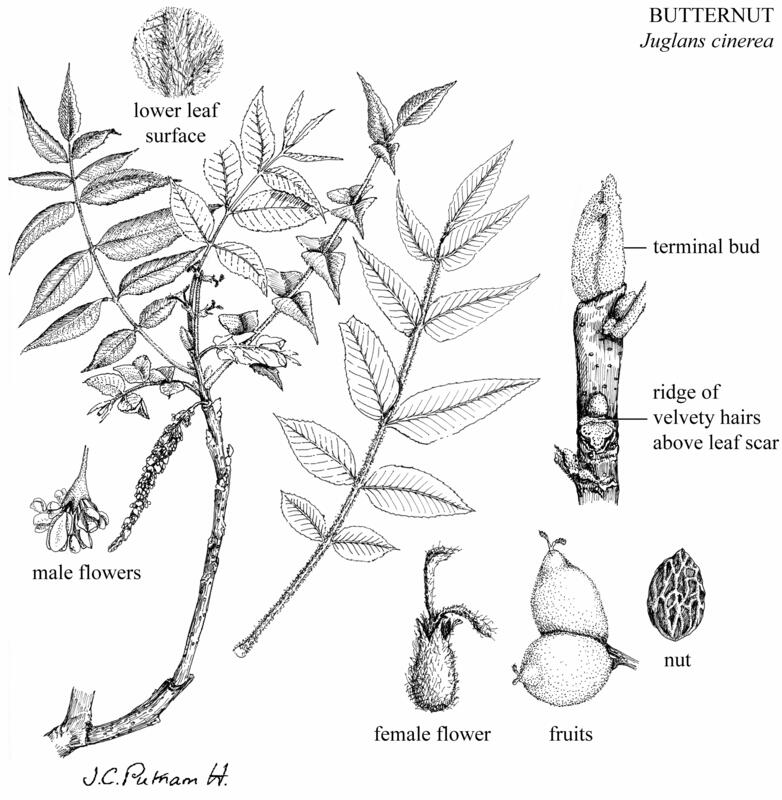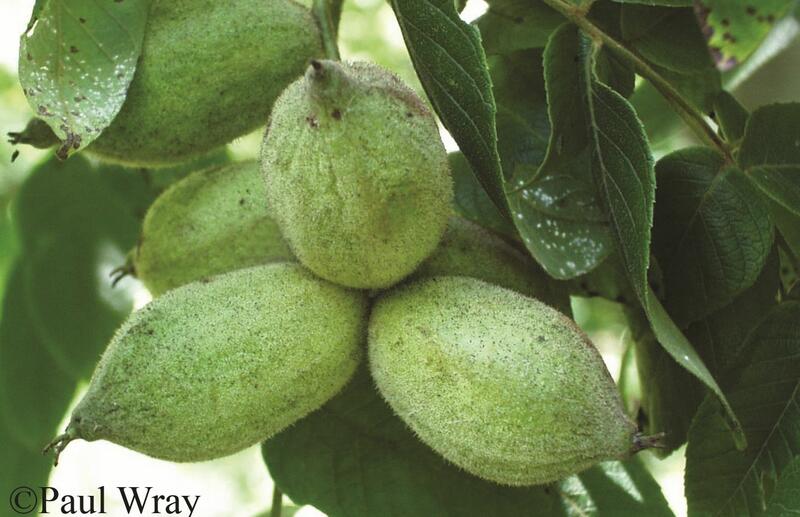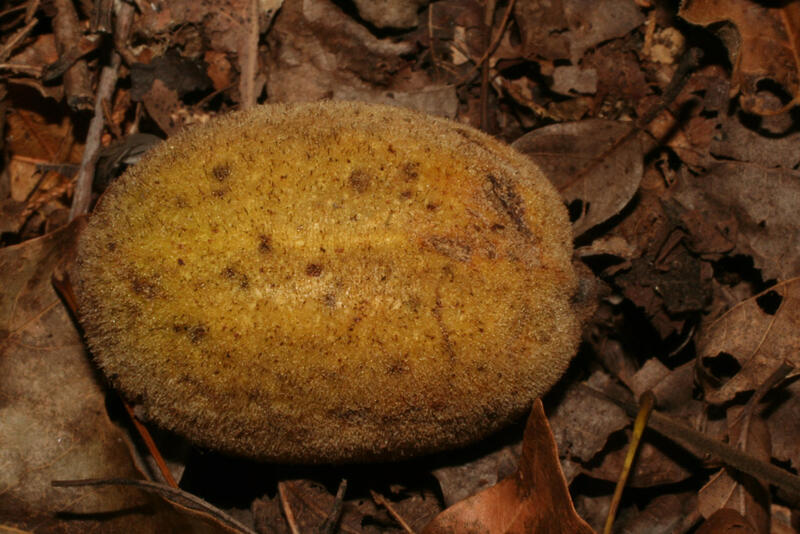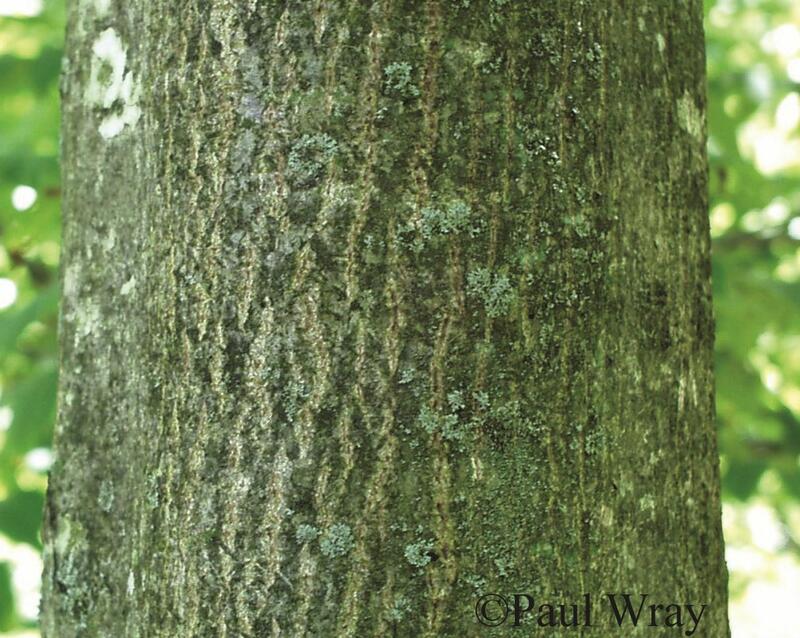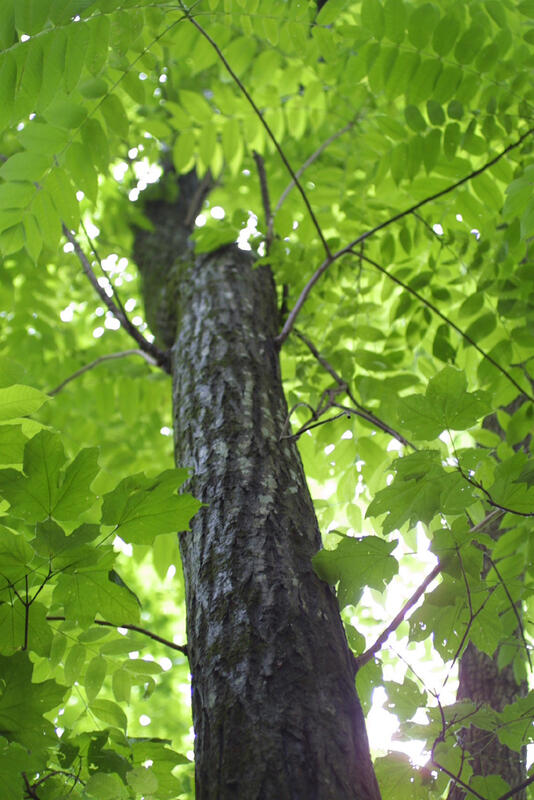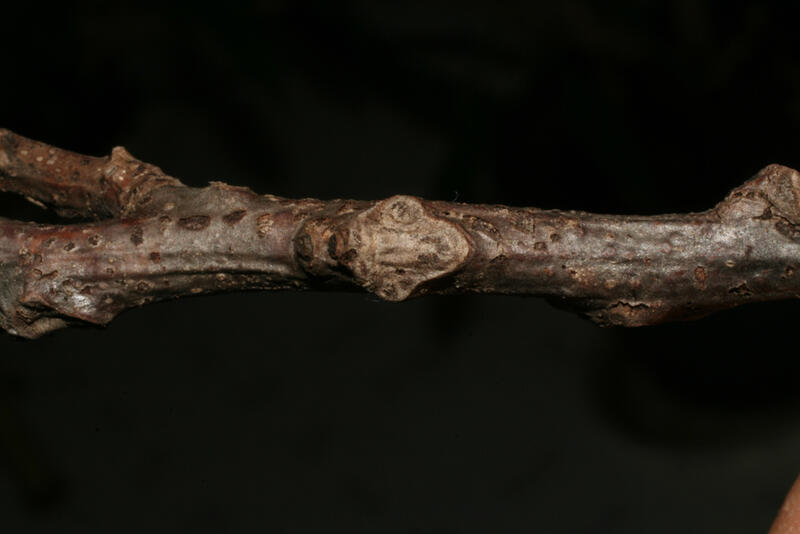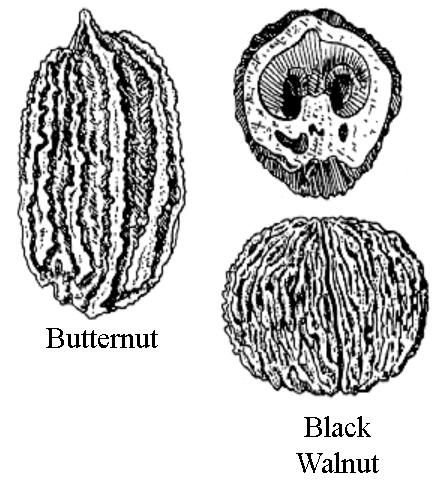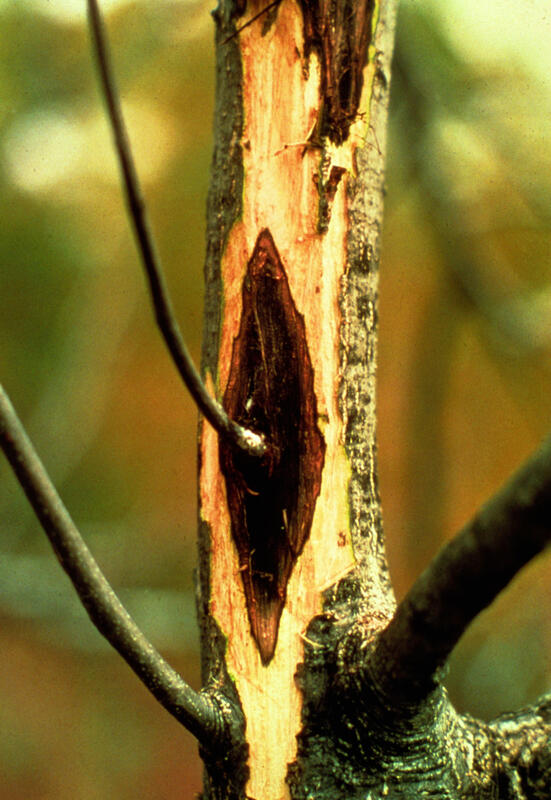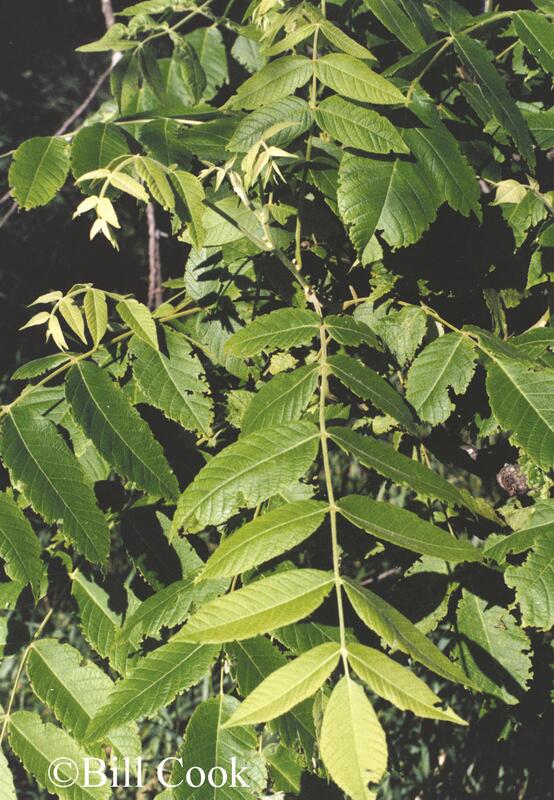







Loading profile. Please wait . . .
Juglans cinerea L.
Butternut




Federal Protection: No US federal protection
State Protection: No Georgia state protection
Global Rank: G3
State Rank: S2
Element Locations Tracked in Biotics: Yes
SWAP 2015 Species of Greatest Conservation Need (SGCN): Yes
SWAP 2025 Species of Greatest Conservation Need (SGCN): No
2025 SGCN Priority Tier: None
Element Occurrences (EOs) in Georgia: 20
Habitat Summary for element in Georgia: Openings in bottomland forests and in the mesophytic hardwood forests of rich mountain coves
Deciduous tree up to 98 feet (30 meters) tall and 2 feet (60 cm) in diameter. Bark is pale gray or gray-brown, smooth on young trees, shallowly divided into long, narrow, vertical plates on older trees. First year twigs are bright green with orange-brown hairs; older twigs are dark gray or brown and rough with many pale lenticels; twigs cut lengthwise show a dark brown, chambered pith. Leaf scars are triangular, with a velvety ridge along the upper edge. Buds at the tips of twigs are cone-shaped and 0.5 - 0.8 inch (1.2 - 2 cm) long. Leaves are 12 - 24 inches (30 - 60 cm) long, alternate, compound, with 11 - 17 toothed leaflets, each leaflet 1 - 7 inches (2.5 - 17.5 cm) long, the upper surfaces dark yellowish-green with scattered branched hairs, the lower surfaces pale green and densely hairy with branched hairs; leaves turn yellow in the fall. The leaf stalk is covered with sticky, glandular hairs. Female and male flowers are produced on the same tree; female flowers are in small spikes of 6 - 8 flowers with bright red pistils and sticky pink hairs; male flowers are in drooping catkins, 2.4 - 5.5 inches (6 - 14 cm) long. Fruits are held in clusters of 3 - 5, each fruit 1 - 3 inches (3 - 8 cm) long, oval or oblong, with a sticky-hairy outer husk; fruits turn from green to yellow when mature. The husk encloses a dark brown, thick-walled nut with eight main ridges and several low, broken ridges between.
Black Walnut (Juglans nigra) is quite similar to Butternut – it has large, compound leaves and dark, chambered pith. But its leaflets are smooth and hairless on the upper surface except for scattered hairs on the midveins, and the lower surface of the leaflets are only slightly hairy. Its bark is very dark, nearly black, and deeply furrowed with a braided appearance. Its leaf scars lack a velvet ridge, the terminal buds are less than 0.5 inch (1.25 cm) long, and the fruits are round and bright green when they fall, turning blackish-brown when mature.
None in Georgia.
Cove forests with rich, moist soils; moist forests along mountain streams; drier hardwood forests over soils high in calcium or magnesium.
Butternut trees reach reproductive age at about 20 years, with fruit production peaking between 30 - 60 years. Some nuts are produced every year, and heavy crops of nuts occur every 2 - 3 years. Seeds are dispersed by gravity, squirrels, and other animals. Butternut trees flower April–June and are wind-pollinated. Butternut trees are infected by an exotic fungus, the butternut canker (Sirococcus clavigignenti-juglandacearum), which invades the bark of branches and trunks; all life stages of the tree are infected by the fungus.
Surveys are best conducted during growing season when leaves are visible although bark, twigs, and nuts are distinctive during the fall and winter.
Georgia, north to New Brunswick and Quebec, west to Arkansas, Minnesota, and Ontario. Butternut is threatened by or vulnerable to butternut canker disease throughout its range.
Infection by butternut canker (see image below), logging and clearing of habitat.
Juglans cinerea is ranked S2 by the Georgia Department of Natural Resources, indicating that the species is imperiled in Georgia. Fourteen sites with Butternut trees have been documented, most on conservation lands, but only five have been confirmed in the last 20 years. Georgia’s Butternut trees are among the southernmost populations of this species. Plants occurring at the periphery of a species’ range are thought to be of special conservation importance. Peripheral populations are usually smaller and less genetically diverse within the population, but genetically divergent from centrally located populations. These genetic differences may confer special survival traits that plants in other portions of the species’ range lack, such as the ability to survive changes in the climate or the arrival of a new pathogen. Peripheral populations may be in the process of evolving into a new species. They are especially deserving of conservation action.
Butternut canker has killed more than 75% of Butternut trees in the southern U.S. Butternut does not root-sprout, therefore an infected tree is lost forever. Support research to develop canker-resistant trees and fund genetic resource conservation programs. Avoid logging and other mechanical disturbances in vicinity of the trees.
Chafin, L.G. 2007. Field guide to the rare plants of Georgia. State Botanical Garden of Georgia and University of Georgia Press, Athens.
GADNR. 2020. Element occurrence records for Juglans cinerea. Georgia Department of Natural Resources, Wildlife Resources Division, Social Circle, Georgia.
Kirkman, L.K., C.L. Brown, and D.J. Leopold. 2007. Native trees of the southeast. Timber Press, Portland, Oregon.
Lance, R. 2004. Woody plants of the southeastern United States: a winter guide. University of Georgia Press, Athens.
NatureServe. 2019. Juglans cinerea comprehensive report. NatureServe Explorer. Arlington, Virginia. http://explorer.natureserve.org/servlet/NatureServe?searchName=Juglans+cinerea
Ostry, M.E. and K. Woeste. 2004. Spread of butternut canker in North America, host range, evidence of resistance within butternut populations and conservation genetics. In: Proceedings of the 6th Walnut Council Research Symposium, Gen. Tech. Rep. NC-243. St. Paul, MN: U.S. Department of Agriculture, Forest Service, North Central Research Station, pp. 114-120 . https://www.nrs.fs.fed.us/pubs/gtr/gtr_nc243/gtr_nc243_114.pdf
Ostry, M.E., M.E. Mielke, and R.L. Anderson.1996. How to identify butternut canker and manage butternut trees. U.S. Forest Service, North Central Forest Experiment Station, Region 8, St. Paul, Minnesota. http://www.na.fs.fed.us/spfo/pubs/howtos/ht\_but/ht\_but.htm
Weakley, A.S. 2015. Flora of the southern and mid-Atlantic States. University of North Carolina Herbarium, University of North Carolina, Chapel Hill. http://www.herbarium.unc.edu/flora.htm
Whittemore, A.T. and D.E. Stone. 1997. Flora of North America, Vol. 3. Oxford University Press, New York. http://www.efloras.org/florataxon.aspx?flora_id=1&taxon_id=233500716
Linda G. Chafin
L. Chafin, Apr. 2007: original account
K. Owers, Feb. 2010: added pictures
L. Chafin, March 2020: updated original account.
